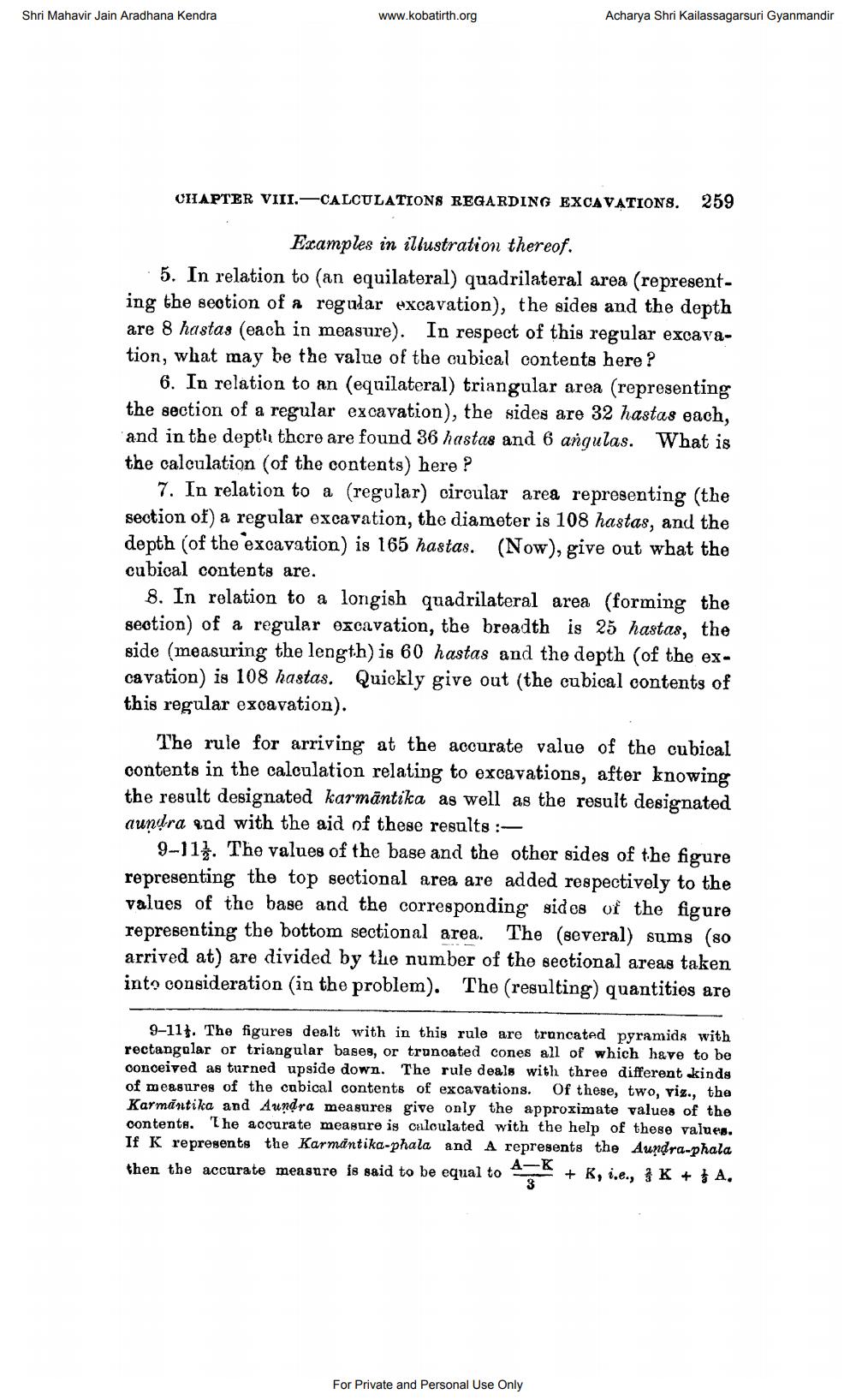________________
Shri Mahavir Jain Aradhana Kendra
www.kobatirth.org
Acharya Shri Kailassagarsuri Gyanmandir
CHAPTER VIII.-CALCULATIONS REGARDING EXCAVATIONS. 259
Examples in illustration thereof. 5. In relation to (an equilateral) quadrilateral area (representing the section of a regular excavation), the sides and the depth are 8 hastas (each in measure). In respect of this regular excavation, what may be the value of the cubical contents here?
6. In relation to an (equilateral) triangular area (representing the section of a regular excavation), the sides are 32 hastas each, and in the depth there are found 36 hastas and 6 angulas. What is the calculation (of the contents) here?
7. In relation to a (regular) circular area representing (the section of) a regular excavation, the diameter is 108 hastas, and the depth (of the excavation) is 165 hastas. (Now), give out what the cubical contents are.
8. In relation to a longish quadrilateral area (forming the section) of a regular excavation, the breadth is 25 hastas, the side (measuring the length) is 60 hastas and the depth (of the excavation) is 108 hastas. Quickly give out (the cubical contents of this regular excavation).
The rule for arriving at the accurate value of the cubical contents in the calculation relating to excavations, after knowing the result designated karmäntika as well as the result designated aundra and with the aid of these results :
9-111. The values of the base and the other sides of the figure representing the top sectional area are added respectively to the values of the base and the corresponding sides of the figure representing the bottom sectional area. The (several) sums (80 arrived at) are divided by the number of the sectional areas taken into consideration in the problem). The resulting) quantities are
9-11}. The figures dealt with in this rule are truncated pyramids with rectangular or triangular bases, or truncated cones all of which have to be conceived as turned upside down. The rule deals with three different kinds of measures of the cubical contents of excavations. Of these, two, viz., the Karmantika and Aundra measures give only the approximate values of the contents. The accurate measure is calculated with the help of these values. If K represents the Karmantika-phala and A represents the Aundra-phala then the accurate measure is said to be equal to + K, i.e., K + $ A,
For Private and Personal Use Only




